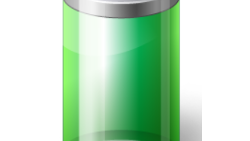Supercapacitor technology could result in the battery of your dreams

There are always new inventions being worked on that promise to improve battery life and charging time for smartphone users. The latest technology comes from the University of Central Florida where a supercapacitor battery prototype has been built. These batteries could last 20 times longer than the current lithium-ion cell.
In theory, these batteries could be a power user's dream. Charge one up for a few seconds, and a handset will last a whole week without needing another charge. Because supercapacitors store power on the surface of a material and don't require a chemical reaction to create the power, these batteries can be charged quickly. The prototype can be charged more than 30,000 times and still act like new. Currently employed cells start losing power capacity after a period of time.
These batteries are also flexible, allowing them to be used in wearables. One major caveat according to Jung, is that the project is not yet ready to be commercialized. "But this is a proof-of-concept demonstration," he said. "Our studies show there are very high impacts for many technologies."
source: UCF via Engadget
The team at UCF played around with concepts, one being the attachment of two-dimensional material only a few atoms thick to the supercapacitors .By allowing electrons to pass quickly from core to shell, it resulted in a material with high energy and power density that charges fast. UCF's Yeonwoong "Eric" Jung said, "We developed a simple chemical synthesis approach so we can very nicely integrate the existing materials with the two-dimensional materials."
"There have been problems in the way people incorporate these two-dimensional materials into the existing systems – that’s been a bottleneck in the field. We developed a simple chemical synthesis approach so we can very nicely integrate the existing materials with the two-dimensional materials."-Yeonwoong "Eric" Jung, principal investigator, assistant professor, NanoScience Technology Center
These batteries are also flexible, allowing them to be used in wearables. One major caveat according to Jung, is that the project is not yet ready to be commercialized. "But this is a proof-of-concept demonstration," he said. "Our studies show there are very high impacts for many technologies."













Things that are NOT allowed: